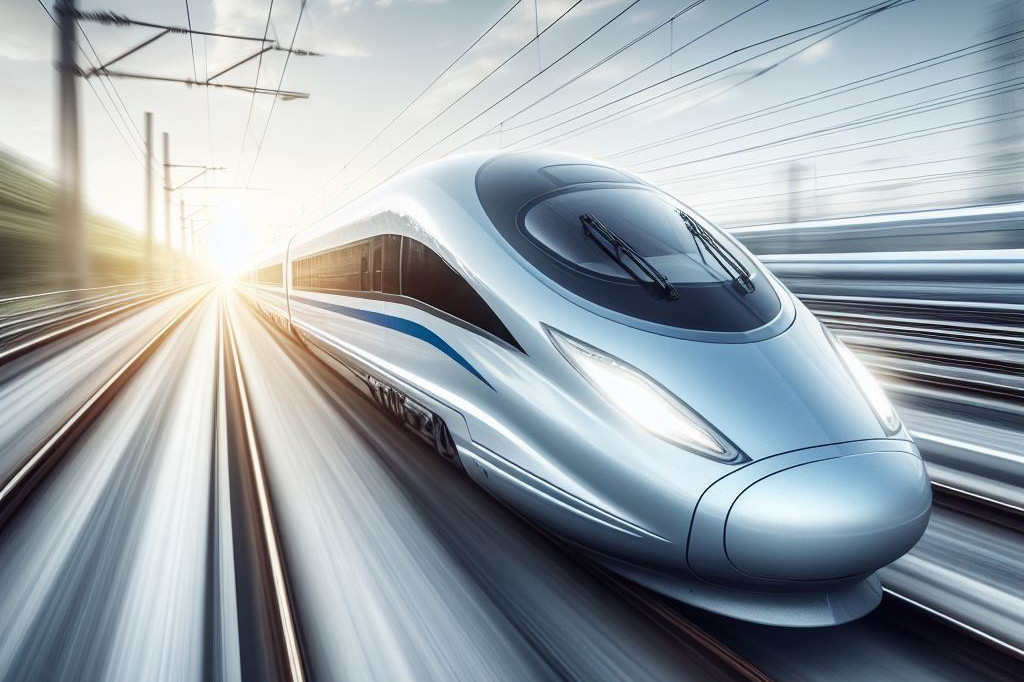
The Government Office released a notice about Ha’s conclusion at a session on implementing a plan to develop high-speed railways.
The North-South high-speed railway will create a driving force for socio-economic development, ensure national defence and security. An industrialized country must have high-speed railways to cut logistics costs and improve the competitiveness of the economy.
Ha asked ministries and agencies to consider solutions in technology, safety and transport capability of the railways on the North-South route (including high-speed railway and the existing 1,000mm railway); and analyze the feasibility of each solution, capital mobilization method, and economic efficiency in order to find an optimal solution.
Prior to that, the Ministry of Transport (MOT) in November 2023, put forward three scenarios for the North-South high-speed railway development.
With Scenario one, Vietnam would build a double-track railway anew, with a rail gauge of 1,435mm, length of 1,545 kilometers, and speed of 350 kilometers per hour. It would only serve passenger transport. Meanwhile, the existing railway would be upgraded to carry cargo and tourists on short distances. The total investment capital would be $67.32 billion.
With Scenario two, the railway would be for both cargo and passenger transport, with a speed of 200-250 kilometers per hour. The existing railway would be modernized to carry cargo and tourists on short distances. The total investment capital is $72.02 billion.
With Scenario three, the designed capacity would be 350 kilometers per hour, reserved for passenger transport, while cargo transport would be implemented if necessary. The total investment capital is $68.98 billion.
If Vietnam also invests in infrastructure and equipment to run cargo trains on the North-South route, the required capital would be $71.69 billion.
250 or 350 kph?
One of the controversial issues about the North-South railway is how high the speed should be and whether the railway should be used for both cargo and passenger transport.
Dr Tran Chung, chair of the Vietnam Association of Road Traffic Investors (VARSI), said he supports a plan to build a railway with a speed of 350 kilometers per hour.
The expert stressed that Vietnam needs to keep a long-term vision and anticipate high demand in the future when designing the North-South railway.
A railway with speed just high enough to meet current needs and needs in the near future would become quickly out of date and overloaded.
Reminding people of the great success in the telecommunications sector when Vietnam decided to invest in modern digital technology, Chung said that having a long term vision is a necessity.
Many countries are facing difficulties upgrading their 250 kilometer per hour railway to 350 kilometers per hour, and they have even thought about building up new routes. Vietnam should learn a lesson from this and develop a 350 kilometer per hour railway, or it will have to pay more to upgrade the railway later.
He said that building a 350 kilometer per hour railway is a step needed to reach the net-zero emissions goal by 2050.
He compared the advantages and disadvantages of a 350 kilometer and 250 kilometer per hour railway.
If the former solution is chosen, it would take only 5.5 hours to go from Hanoi to HCM City, which would prompt passengers to take trains.
If the latter is chosen (250 kilometers per hour), trains would be much slower than airplanes, which means that railways would be much less competitive.
The other factor that experts are arguing about is whether the new railway should be used for both passenger and cargo transport.
MOT cited consultant’s opinions as saying that 350 kilometer per hour trains can carry both passengers and cargo, if train schedules can be arranged reasonably.
Chung believes that the new railway should be used to carry passengers only. If the railway is used for cargo transport as well, Vietnam would have to build more stations.
Hanoi-China link
In the latest news, Vietnam has decided to prioritize building two high-speed railway lines linking Hanoi and China before 2030.
Prior to that, the Politburo requested the completion of the North-South high-speed railway investment plan and the start of construction before 2030. The Hanoi - Vinh and HCM City – Nha Trang sections would kick off in 2026-2030.
N. Huyen